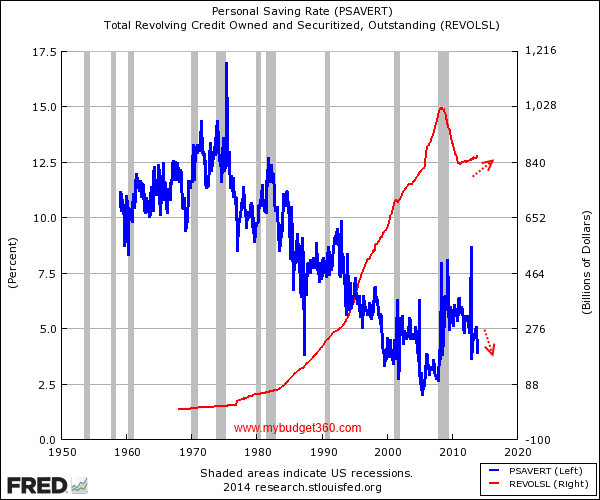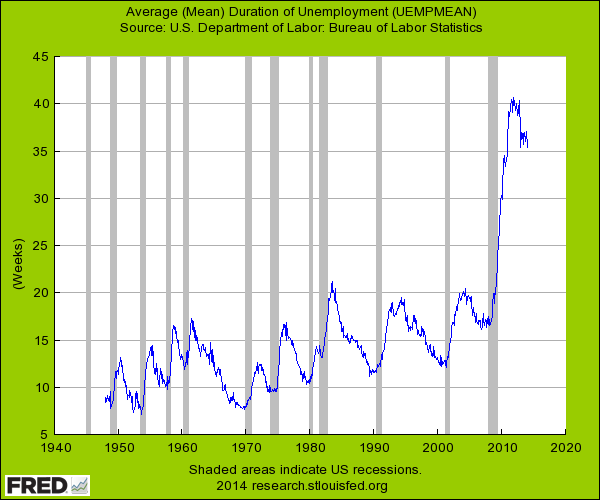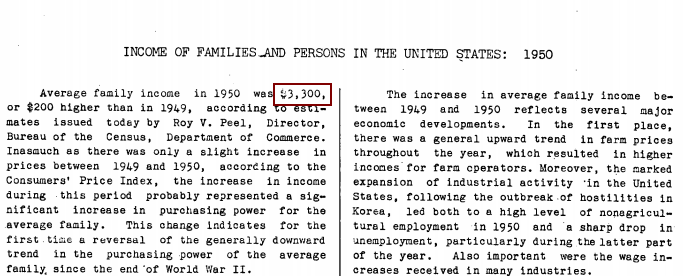We Created Terrorists to Fight the Soviets in Afghanistan
Washington’s Blog
March 1, 2014
March 1, 2014
Top American officials admit that the U.S. armed and supported Bin Laden and the other Mujahadin– which later morphed into Al Qaeda – in the 1970s, in order to fight the Soviets.
 Jimmy Carter’s National Security Adviser Zbigniew Brzezinski admitted on CNN that the U.S. organized and supported Bin Laden and the other originators of “Al Qaeda” in the 1970s to fight the Soviets. Brzezinski told Al Qaeda’s forefathers – the Mujahadin:
Jimmy Carter’s National Security Adviser Zbigniew Brzezinski admitted on CNN that the U.S. organized and supported Bin Laden and the other originators of “Al Qaeda” in the 1970s to fight the Soviets. Brzezinski told Al Qaeda’s forefathers – the Mujahadin:We know of their deep belief in God – that they’re confident that their struggle will succeed. That land over – there is yours – and you’ll go back to it some day, because your fight will prevail, and you’ll have your homes, your mosques, back again, because your cause is right, and God is on your side.
Former Secretary of State Hillary Clinton agrees:
MSNBC reported in 1998:
As his unclassified CIA biography states, bin Laden left Saudi Arabia to fight the Soviet army in Afghanistan after Moscow’s invasion in 1979. By 1984, he was running a front organization known as Maktab al-Khidamar – the MAK – which funneled money, arms and fighters from the outside world into the Afghan war.What the CIA bio conveniently fails to specify (in its unclassified form, at least) is that the MAK was nurtured by Pakistan’s state security services, the Inter-Services Intelligence agency, or ISI, the CIA’s primary conduit for conducting the covert war against Moscow’s occupation.***The CIA, concerned about the factionalism of Afghanistan … found that Arab zealots who flocked to aid the Afghans were easier to “read” than the rivalry-ridden natives. While the Arab volunteers might well prove troublesome later, the agency reasoned, they at least were one-dimensionally anti-Soviet for now. So bin Laden, along with a small group of Islamic militants from Egypt, Pakistan, Lebanon, Syria and Palestinian refugee camps all over the Middle East, became the “reliable” partners of the CIA in its war against Moscow.***To this day, those involved in the decision to give the Afghan rebels access to a fortune in covert funding and top-level combat weaponry continue to defend that move in the context of the Cold War. Sen. Orrin Hatch, a senior Republican on the Senate Intelligence Committee making those decisions, told my colleague Robert Windrem that he would make the same call again today even knowing what bin Laden would do subsequently. “It was worth it,” he said.“Those were very important, pivotal matters that played an important role in the downfall of the Soviet Union,” he said.
Indeed, the U.S. started backing Al Qaeda’s forefathers even before the Soviets invaded Afghanistan. As Brzezinski told Le Nouvel Observateur in a 1998 interview:
Question: The former director of the CIA, Robert Gates, stated in his memoirs ["From the Shadows"], that American intelligence services began to aid the Mujahadeen in Afghanistan 6 months before the Soviet intervention. In this period you were the national security adviser to President Carter. You therefore played a role in this affair. Is that correct?Brzezinski: Yes. According to the official version of history, CIA aid to the Mujahadeen began during 1980, that is to say, after the Soviet army invaded Afghanistan, 24 Dec 1979. Butthe reality, secretly guarded until now, is completely otherwise Indeed, it was July 3, 1979 that President Carter signed the first directive for secret aid to the opponents of the pro-Soviet regime in Kabul. And that very day, I wrote a note to the president in which I explained to him that in my opinion this aid was going to induce a Soviet military intervention.***
Q: And neither do you regret having supported the Islamic fundamentalism, having given arms and advice to future terrorists?B: What is most important to the history of the world? The Taliban or the collapse of the Soviet empire? Some stirred-up Moslems or the liberation of Central Europe and the end of the cold war?
The Washington Post reported in 2002:
The United States spent millions of dollars to supply Afghan schoolchildren with textbooks filled with violent images and militant Islamic teachings …The primers, which were filled with talk of jihad and featured drawings of guns, bullets, soldiers and mines, have served since then as the Afghan school system’s core curriculum. Even the Taliban used the American-produced books ….
The Council on Foreign Relations notes:
The 9/11 Commission report (PDF) released in 2004 said some of Pakistan’s religious schools or madrassas served as “incubators for violent extremism.” Since then, there has been much debate over madrassas and their connection to militancy.***New madrassas sprouted, funded and supported by Saudi Arabia and U.S. Central Intelligence Agency, where students were encouraged to join the Afghan resistance.
And see this.
Veteran journalist Robert Dreyfuss writes:
For half a century the United States and many of its allies saw what I call the “Islamic right” as convenient partners in the Cold War.***In the decades before 9/11, hard-core activists and organizations among Muslim fundamentalists on the far right were often viewed as allies for two reasons, because they were seen a fierce anti-communists and because the opposed secular nationalists such as Egypt’s Gamal Abdel Nasser, Iran’s Mohammed Mossadegh.***By the end of the 1950s, rather than allying itself with the secular forces of progress in the Middle East and the Arab world, the United States found itself in league with Saudi Arabia’s Islamist legions. Choosing Saudi Arabia over Nasser’s Egypt was probably the single biggest mistake the United States has ever made in the Middle East.A second big mistake … occurred in the 1970s, when, at the height of the Cold War and the struggle for control of the Middle East, the United States either supported or acquiesced in the rapid growth of Islamic right in countries from Egypt to Afghanistan. In Egypt, Anwar Sadat brought the Muslim Brotherhood back to Egypt. In Syria, the United States, Israel, and Jordan supported the Muslim Brotherhood in a civil war against Syria. And … Israel quietly backed Ahmed Yassin and the Muslim Brotherhood in the West Bank and Gaza, leading to the establishment of Hamas.Still another major mistake was the fantasy that Islam would penetrate the USSR and unravel the Soviet Union in Asia. It led to America’s support for the jihadists in Afghanistan. But … America’s alliance with the Afghan Islamists long predated the Soviet invasion of Afghanistan in 1979 and had its roots in CIA activity in Afghanistan in the 1960s and in the early and mid-1970s. The Afghan jihad spawned civil war in Afghanistan in the late 1980s, gave rise to the Taliban, and got Osama bin Laden started on building Al Qaeda.Would the Islamic right have existed without U.S. support? Of course. This is not a book for the conspiracy-minded. But there is no question that the virulence of the movement that we now confront—and which confronts many of the countries in the region, too, from Algeria to India and beyond—would have been significantly less had the United States made other choices during the Cold War.
In other words, if the U.S. and our allies hadn’t backed the radical violent Muslims instead of more stable, peaceful groups in the Middle East, radical Islam wouldn’t have grown so large.
Pakistani nuclear scientist and peace activist Perez Hoodbhoy writes:
Every religion, including Islam, has its crazed fanatics. Few in numbers and small in strength, they can properly be assigned to the “loony” section. This was true for Islam as well until 1979, the year of the Soviet invasion of Afghanistan. Indeed, there may well have been no 911 but for this game-changer.***Officials like Richard Perle, Assistant Secretary of Defense, immediately saw Afghanistan not as the locale of a harsh and dangerous conflict to be ended but as a place to teach the Russians a lesson. Such “bleeders” became the most influential people in Washington .***The task of creating such solidarity fell upon Saudi Arabia, together with other conservative Arab monarchies. This duty was accepted readily and they quickly made the Afghan Jihad their central cause…. But still more importantly, to go heart and soul for jihad was crucial at a time when Saudi legitimacy as the guardians of Islam was under strong challenge by Iran, which pointed to the continued occupation of Palestine by America’s partner, Israel. An increasing number of Saudis were becoming disaffected by the House of Saud – its corruption, self-indulgence, repression, and closeness to the US. Therefore, the Jihad in Afghanistan provided an excellent outlet for the growing number of militant Sunni activists in Saudi Arabia, and a way to deal with the daily taunts of the Iranian clergy.***The bleeders soon organized and armed the Great Global Jihad, funded by Saudi Arabia, and executed by Pakistan. A powerful magnet for militant Sunni activists was created by the US. The most hardened and ideologically dedicated men were sought on the logic that they would be the best fighters. Advertisements, paid for from CIA funds, were placed in newspapers and newsletters around the world offering inducements and motivations to join the Jihad.American universities produced books for Afghan children that extolled the virtues of jihad and of killing communists. Readers browsing through book bazaars in Rawalpindi and Peshawar can, even today, sometimes find textbooks produced as part of the series underwritten by a USAID $50 million grant to the University of Nebraska in the 1980′s . These textbooks sought to counterbalance Marxism through creating enthusiasm in Islamic militancy. They exhorted Afghan children to “pluck out the eyes of the Soviet enemy and cut off his legs”. Years after the books were first printed they were approved by the Taliban for use in madrassas – a stamp of their ideological correctness and they are still widely available in both Afghanistan and Pakistan.At the international level, Radical Islam went into overdrive as its superpower ally, the United States, funneled support to the mujahideen. Ronald Reagan feted jihadist leaders on the White House lawn, and the U.S. press lionized them.
And the chief of the visa section at the U.S. consulate in Jeddah, Saudi Arabia (J. Michael Springmann, who is now an attorney in private practice) says that the CIA insisted that visas be issued to Afghanis so they could travel to the U.S. to be trained in terrorism in the United States, and then sent back to Afghanistan to fight the Soviets.
1993 World Trade Center Bombing
New York District Attorney Robert M. Morgenthau believed that the intelligence services could and should have stopped the 1993 bombing of the World Trade Center, but they were preoccupied with other issues cover. As well-known investigative journalist Robert I. Friedman wrote in New York Magazine in 1995:
New York District Attorney Robert M. Morgenthau believed that the intelligence services could and should have stopped the 1993 bombing of the World Trade Center, but they were preoccupied with other issues cover. As well-known investigative journalist Robert I. Friedman wrote in New York Magazine in 1995:
Shiekh Omar Abdel Rahman commands an almost deified adoration and respect in certain Islamic circles. It was his 1980 fatwa – religious decree – condemning Anwar Sadat for making peace with Israel that is widely believed to be responsible for Sadat’s assassination a year later. (Rahman was subsequently tried but acquitted.)***The CIA paid to send Abdel Rahman to Peshawar ‘to preach to the Afghans about the necessity of unity to overthrow the Kabul regime,’ according to Professor Rubin. By all accounts, Rahman was brilliant at inspiring the faithful.As a reward for his services, the CIA gave the sheikh a one-year visa to the United States in May, 1990 – even though he was on a State Department terrorism watch list that should have barred him from the country.After a public outcry in the wake of the World Trade Centre bombing, a State Department representative discovered that Rahman had, in fact, received four United States visas dating back to December 15, 1986. All were given to him by CIA agents acting as consular officers at American embassies in Khartoum and Cairo. The CIA officers claimed they didn’t know the sheikh was one of the most notorious political figures in the Middle East and a militant on the State Department’s list of undesirables. The agent in Khartoum said that when the sheikh walked in the computers were down and the Sudanese clerk didn’t bother to check the microfiche file.Says one top New York investigator: ‘Left with the choice between pleading stupidity or else admitting deceit, the CIA went with stupidity.’***The sheikh arrived in Brooklyn at a fortuitous time for the CIA. In the wake of the Soviet Union’s retreat from Afghanistan, Congress had slashed the amount of covert aid going to the mujaheddin. The international network of Arab-financed support groups became even more vital to the CIA, including the string of jihad offices that had been set up across America with the help of Saudi and American intelligence. To drum up support, the agency paved the way for veterans of the Afghan conflict to visit the centres and tell their inspirational war stories; in return, the centres collected millions of dollars for the rebels at a time when they needed it most.There were jihad offices in Jersey City, Atlanta and Dallas, but the most important was the one in Brooklyn, called Alkifah – Arabic for ‘the struggle.’ That storefront became the de facto headquarters of the sheikh.***On November 5, 1990, Rabbi Meir Kahane, an ultra-right-wing Zionist militant, was shot in the throat with a .357 magnum in a Manhattan hotel; El-Sayyid Nosair was gunned down by an off-duty postal inspector outside the hotel, and the murder weapon was found a few feet from his hand.A subsequent search of Nosair’s Cliffside Park, New Jersey home turned up forty boxes of evidence – evidence that, had the D.A.’s office and the FBI looked at it more carefully, would have revealed an active terrorist conspiracy about to boil over in New York.***In addition to discovering thousands of rounds of ammunition and hit lists with the names of New York judges and prosecutors, investigators found amongst the Nosair evidence classified U.S. military-training manuals.***Also found amongst Nosair’s effects were several documents, letters and notebooks in Arabic, which when eventually translated would point to e terror conspiracy against the United States. The D.A.’s office shipped these, along with the other evidence, to the FBI’s office at 26 Federal Plaza. ‘We gave all this stuff to the bureau, thinking that they were well equipped,’ says one source close to the D.A.’s office. ‘After the World Trade Centre, we discovered they never translated the material.’According to other sources familiar with the case, the FBI told District Attorney Robert M. Morgenthau that Nosair was a lone gunman, not part of a broader conspiracy; the prosecution took this position at trial and lost, only convicting Nosair of gun charges. Morgenthau speculated the CIA may have encouraged the FBI not to pursue any other leads, these sources say. ‘The FBI lied to me,’ Morgenthau has told colleagues. ‘They’re supposed to untangle terrorist connections, but they can’t be trusted to do the job.’Three years later, on the day the FBI arrested four Arabs for the World Trade Centre bombing, saying it had all of the suspects, Morgenthau’s ears pricked up. He didn’t believe the four were ‘self-starters,’ and speculated that there was probably a larger network as well as a foreign sponsor. He also had a hunch that the suspects would lead back to Sheikh Abdel Rahman. But he worried that the dots might not be connected because the U.S. government was protecting the sheikh for his help in Afghanistan.***Nevertheless, some in the D.A.’s office believe that until the Ryder van exploded underneath New York’s tallest building, the sheikh and his men were being protected by the CIA. Morgenthau reportedly believes the CIA brought the sheikh to Brooklyn in the first place….As far as can be determined, no American agency is investigating leads suggesting foreign-government involvement in the New York terror conspiracy. For example, Saudi intelligence has contributed to Sheikh Rahman’s legal-defence fund, according to Mohammed al-Khilewi, the former first secretary to the Saudi mission at the U.N.
Friedman notes that intelligence agents had possession of notes which should have linked all of these terrorists, but failed to connect the dots prior to 1993.
CNN ran a special report in 1994 called “Terror Nation? U.S. Creation?“, which noted – assummarized by Congressman Peter Deutsch:
Some Afghan groups that have had close affiliation with Pakistani Intelligence are believed to have been involved in the [1993] New York World Trade Center bombings.***Pro-Western afghan officials … officially warned the U.S. government about Hekmatyar no fewer than four times. The last warning delivered just days before the [1993] Trade Center attack.” Speaking to former CIA Director Robert Gates, about Gulbuddin Hekmatyar, Peter Arnett reports, “The Pakistanis showered Gulbuddin Hekmatyar with U.S. provided weapons and sang his praises to the CIA. They had close ties with Hakmatyar going back to the mid-1970′s.”
This is interesting because it is widely-acknowledged that Gulbuddin Hekmatyar was enthusiastically backed by the U.S. For example, U.S. News and World Report says:
[He was] once among America’s most valued allies. In the 1980s, the CIA funneled hundreds of millions of dollars in weapons and ammunition to help them battle the Soviet Army during its occupation of Afghanistan. Hekmatyar, then widely considered by Washington to be a reliable anti-Soviet rebel, was even flown to the United States by the CIA in 1985.
CIA Trained Ramzi Yousef and Other Key Terrorists
Moreover, Jane’s Defense Weekly – a respected and widely-cited British military journal – reported in October 2001 that Ramzi Yousef and the other World Trade Center bombers were trained by the CIA and ISI (via the Internet Archive):
Moreover, Jane’s Defense Weekly – a respected and widely-cited British military journal – reported in October 2001 that Ramzi Yousef and the other World Trade Center bombers were trained by the CIA and ISI (via the Internet Archive):
Pakistan’s sinister Inter Services Intelligence (ISI) remains the key to providing accurate information to the US-led alliance in its war against Osama bin Laden and his Taliban hosts in Afghanistan. Known as Pakistan’s ‘secret army’ and ‘invisible government’, its shadowy past is linked to political assassinations and the smuggling of narcotics as well as nuclear and missile components.***The ISI chief, Lt Gen Mahmood Ahmed, who was visiting Washington when New York and the Pentagon were attacked, agreed to share desperately needed information about the Taliban with the Central Intelligence Agency (CIA) and other US security officials. The CIA has well-established links with the ISI, having trained it in the 1980s to ‘run’ Afghan mujahideen (holy Muslim warriors), Islamic fundamentalists from Pakistan as well as Arab volunteers by providing them with arms and logistic support to evict the Soviet occupation of Kabul.***After the ignominious Soviet withdrawal from Kabul in 1989 the ISI, determined to achieve its aim of extending Pakistan’s ‘strategic depth’ and creating an Islamic Caliphate by controlling Afghanistan and the Central Asian Republics, began sponsoring a little-known Pathan student movement in Kandhar that emerged as the Taliban. The ISI used funds from Prime Minister Benazir Bhutto’s federal government and from overseas Islamic remittances to enrol graduates from thousands of madrassahs (Muslim seminaries) across Pakistan to bolster the Taliban (Islamic students), who were led by the reclusive Mullah Muhammad Omar. Thereafter, through a ruthless combination of bribing Afghanistan’s ruling tribal coalition (which was riven with internecine rivalry), guerrilla tactics and military support the ISI installed the Taliban regime in Kabul in 1996. It then helped to extend its control over 95 per cent of the war-torn country and bolster its military capabilities. The ISI is believed to have posted additional operatives in Afghanistan just before the 11 September attacks in the US. Along with Osama bin Laden, intelligence sources say a number of other infamous names emerged from the 1980s ISI-CIA collaboration in Afghanistan. These included Mir Aimal Kansi, who assassinated two CIA officers outside their office in Langley, Virginia, in 1993, Ramzi Yousef and his accomplices involved in the New York World Trade Center bombing five years later as well as a host of powerful international narcotics smugglers.
Ramzi Yousef was not only the mastermind of the 1993 World Trade Center bombing, but also a key member of the Bojinka Plot … the blueprint for 9/11.
Bosnia
As professor of strategy at the Naval War College and former National Security Agency intelligence analyst and counterintelligence officer John R. Schindler documents, the U.S. supported Bin Laden and other Al Qaeda terrorists in Bosnia.
2001
Former counter-terrorism boss Richard Clarke theorizes that top CIA brass tried to recruit the hijackers and turn them to our side, but were unsuccessful. And – when they realized had failed – they covered up their tracks so that the FBI would not investigate their illegal CIA activities , “malfeasance and misfeasance”, on U.S. soil.
And according to reports from Bloomberg, an ABC News investigative reporter and others, one of the main trainers of Bin Laden and Al Qaeda worked at various times for the CIA, FBI and Green Berets.
The bottom line, sadly, is that the U.S. has backed the world’s most dangerous and radical Muslim terrorists for decades. And see this.







.jpg)






